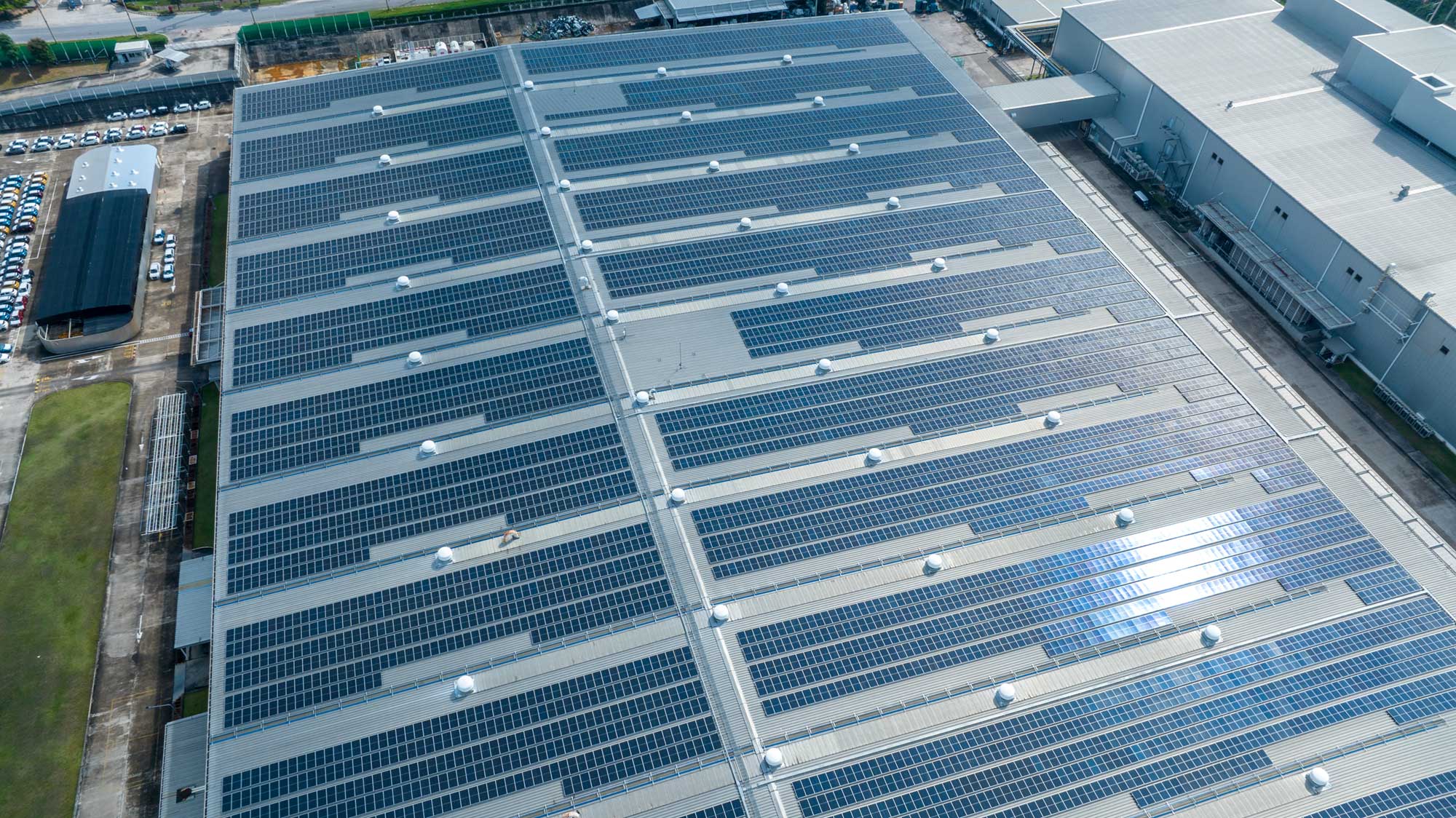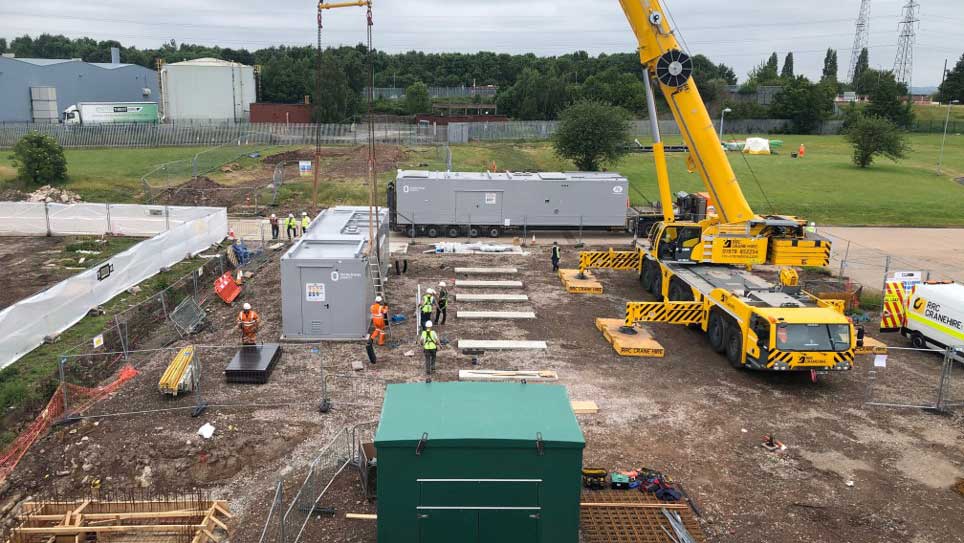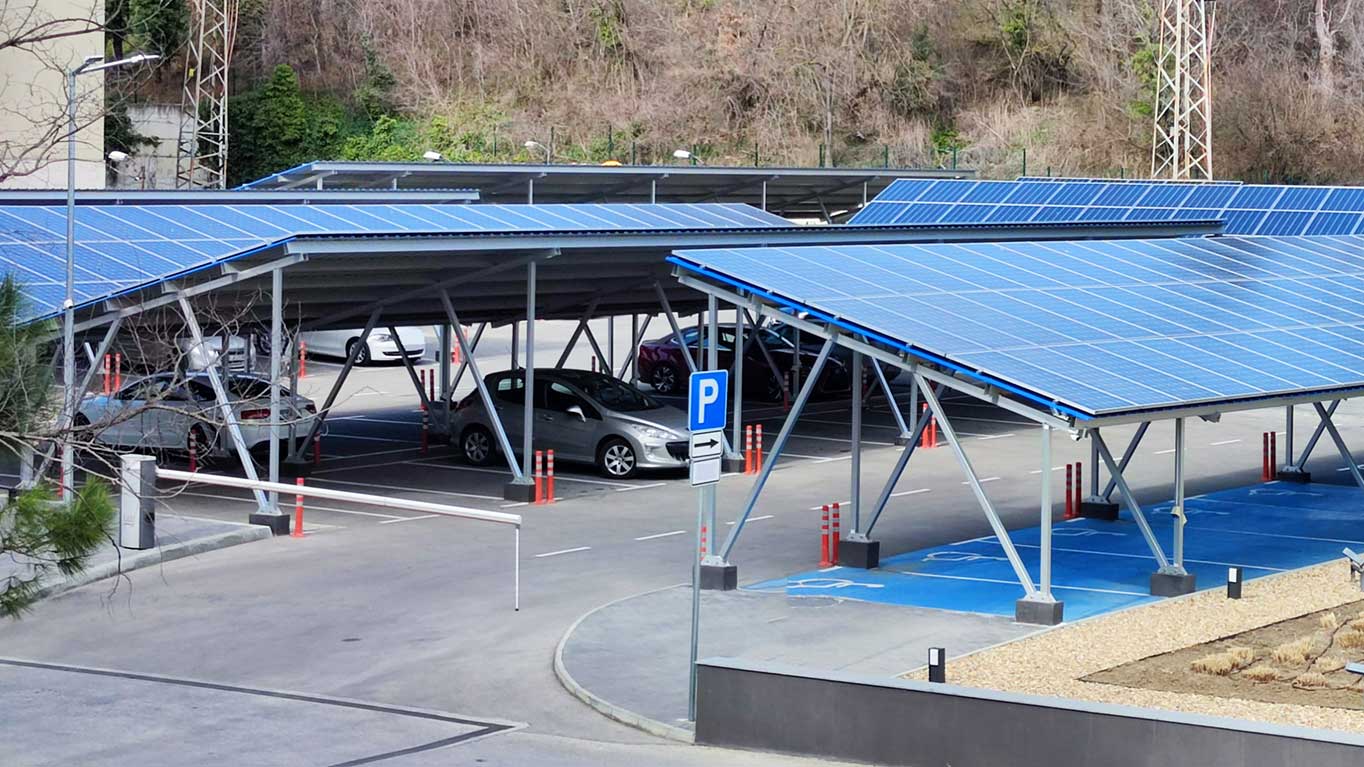On Site Energy
“Innovation Sets Us Apart”
Financing and building energy projects for large manufacturing corporates, On Site Energy has found its niche in the market. As companies strive for net zero, On Site Energy helps with a fully funded structure to unlock the full sustainability potential of each site, using innovative energy efficiency and onsite generation technologies. Founder David Kipling tells Energy Focus more about this exciting, powerful young business.
The team at On Site Energy is driving a fresh new strategy for net zero attainment. Most large companies are onboard with the idea of reducing emissions by 2030 and then cutting all possible emissions completely by 2050. Corporate targets are ambitious but full of opportunity.
However, the true cost of achieving the required reductions is vast – in some cases all-new technologies are required, and complete overhaul of existing operations presents many hurdles.
On Site Energy, the Liverpool headquartered energy solutions provider, is helping clients to achieve sustainability goals while minimising energy costs and doing so without major upfront capital expenditure.
Prior to founding On-Site Energy in 2021, David Kipling had been Vice President at a NYSE-listed manufacturing corporate with a leading role in corporate venturing in distributed commercial energy technologies. He led a team rolling-out an innovative energy savings process across the business’ factories globally. In that role he identified the issues preventing listed companies from more widely adopting energy savings opportunities and sustainability measures, which has been a key learning in On-Site Energy’s business model.
Using solutions such as combined heat and power systems, solar PV, onsite wind generation, waste heat to energy, gasification to energy, energy storage systems, and much more, Kipling had witnessed significant cost saving results and efficiency improvements earlier in his career. Employing these technologies in a fully funded structure at manufacturing sites in the UK made sense.
To date with On Site Energy, the journey has been exciting, and Kipling is now looking at fresh horizons for new opportunity.
“We focus solely on private sector manufacturing companies, typically those spending over £1 million on their energy costs annually,” he tells Energy Focus. “We are completely agnostic to any technology or supplier, and will always take a data-led, holistic approach to analysing a site’s energy performance and designing a solution. We are different from a solar company – we are not a single product vendor. We come as a problem solver and offer a solution for those trying to drive towards net zero within certain parameters. We enable that action through human and financial resourcing options when companies don’t have the resources needed to deliver sustainable energy projects. We fund projects and deliver them with a zero-capex energy supply agreement model. At our core, we are all about making things happen.”
PROBLEM SOLVERS
An expert understanding of identifying the suitable solution, and a very strong background in accountancy, the On-Site Energy team have sparked a revolution for manufacturing companies, allowing them to unlock potential that would otherwise be unachievable.
The idea to bring the entire suite of products comes from Kipling’s experience in the industry where he saw companies either able to afford new systems but not sure how to best implement, or companies with a clear understanding of what they need but no money to complete the rollout.
Now, any sizeable manufacturing company with environmental ambitions can change their energy consumption for the better, using a finance model that provides flexibility.
“Our core business is developing a concept solution to a customer’s energy needs based on their data,” says Kipling. “We come up with a plan that includes one or more measures to achieve their goals while improving cost and carbon position. We present that to the client with two options. Firstly, where they fund the capex, or secondly where we fund the capex, and we set out the benefits of each route. Our preferred model is the zero-capex model where we fund everything. We would then pay for everything that is involved in the project. We charge customers for the electrical or thermal energy generated at a pre-agreed price – a discount to what they’re currently paying to the grid.”
After just two years in business, On Site has around £20 million of zero-capex assets operating, with another £80 million in development or construction right now. The company has grown to become a thriving home of 15 people with a robust supply chain, and revenue is expected to more than triple by the end of 2025.
“We started with one technology, and we are expanding with three other technologies to add to the original. That means we will start to form a microgrid onsite and look at things like inter-seasonal heat storage to move load shift around,” suggest Kipling.
He highlights a current project where a large, national automotive manufacturer that uses around 200,000 MWh of electricity and thermal on site annually as a great example of what can be achieved. “We have developed a three-step approach to get them down to net zero on site by 2030 – ahead of targets. We’re in the process of implementing that with things like heating demand reduction and overhauling controls in the air handling units to installing generation on site while adapting to hydrogen.”
VERY FLEXIBLE
To deliver such an offering with such a small team, On Site outsources much of the engineering, construction, and connection activity, handling all of the financial structuring internally. To ensure quality at all times, the company is hands on with the supply chain, vetting and reviewing to deliver best-in-class.
“Supply chain falls into two main categories – equipment suppliers, and mechanical and electrical consultants and contractors (including CDM),” says Kipling. “We’re in a position to fund the right projects up to a large scale. We have third parties who like what we do and can come in and refinance projects when they’re operational. Our current strategy is to build with our own money and then refinance to bring in dept and release equity to go again. We’re not linked to a financial institution and we’re very flexible in the terms and structure we can put together,” he adds.
A dedicated team prepares supplier evaluation when putting contracts out for tender. To provide continuity on site, the team will look at incumbent suppliers already active with a specific client and try to work with them to make any process as seamless as possible. “Providing they are competitive and of the right quality, we will always get the incumbent a chance. Often, they are the right fit and they improve on quotes compared to others,” says Kipling.
WESTERN EUROPE?
Growing quickly, buoyed by legislative requirements for decarbonisation combined with strict ESG obligations, On Site Energy has a number of companies hoping to put its ISO 14001-accredited influence to work. Kipling details that the pull from Europe is also being felt as existing clients look to replicate success achieved in the UK.
“We are 95% in the UK and we have agreed our first project in the Netherlands,” he states. “We are also in the early stages of looking at project in Germany and Serbia. The plan is to expand into Western Europe, but we will follow our customers wherever they want to go with us. Our customers tend to be multi-site operations and we often strike relationships on the core site before following around different jurisdictions.”
He explains that, as success continues both at home and abroad, the company will set up satellite offices to support operations on the continent. The first will likely be in the Netherlands to service the Netherlands, Germany, and Belgium.
The important issue, Kipling says, is that clients consider grid access early in their planning process. Grid congestion has long been overlooked and is a source of regular frustration for project developers, especially in the UK. In 2021 alone, the country wasted 7TWh because of congestion.
“A number of people are blindly planning their net zero or decarbonisation targets assuming they can connect a solar array here and a wind turbine there. The reality is different, there are long delays and we try to educate clients while helping them to negotiate their way through the grid application process,” he says.
But On-Site Energy has built a team of people able to address most questions from clients, including those about grid access, complex technology rollout amidst a global logistics challenge, and unpredictable economic climate. “We have assembled a really good team. We are starting to get companies talking about us and companies approaching us for repeat business. These are large blue-chip customers, and that feels really good. We are creating something a bit different, and that is enjoyable,” Kipling beams.
By addressing both the need for inventive thinking as well as financing solutions, On Site Energy is brining true solutions to the problems of clients. Not a one size fits all approach, each project is different and each solution is tailor-made. For those large manufacturers serious about net zero, a partnership with On Site could be the answer to multiple questions all in one.
“Innovation sets us apart. We don’t boast that – people tell us that,” concludes Kipling. “We develop more innovative solutions, and we are prepared to take a wider technology brief than others. We will take on projects that others will see as too challenging – we not afraid of technical challenges.”




